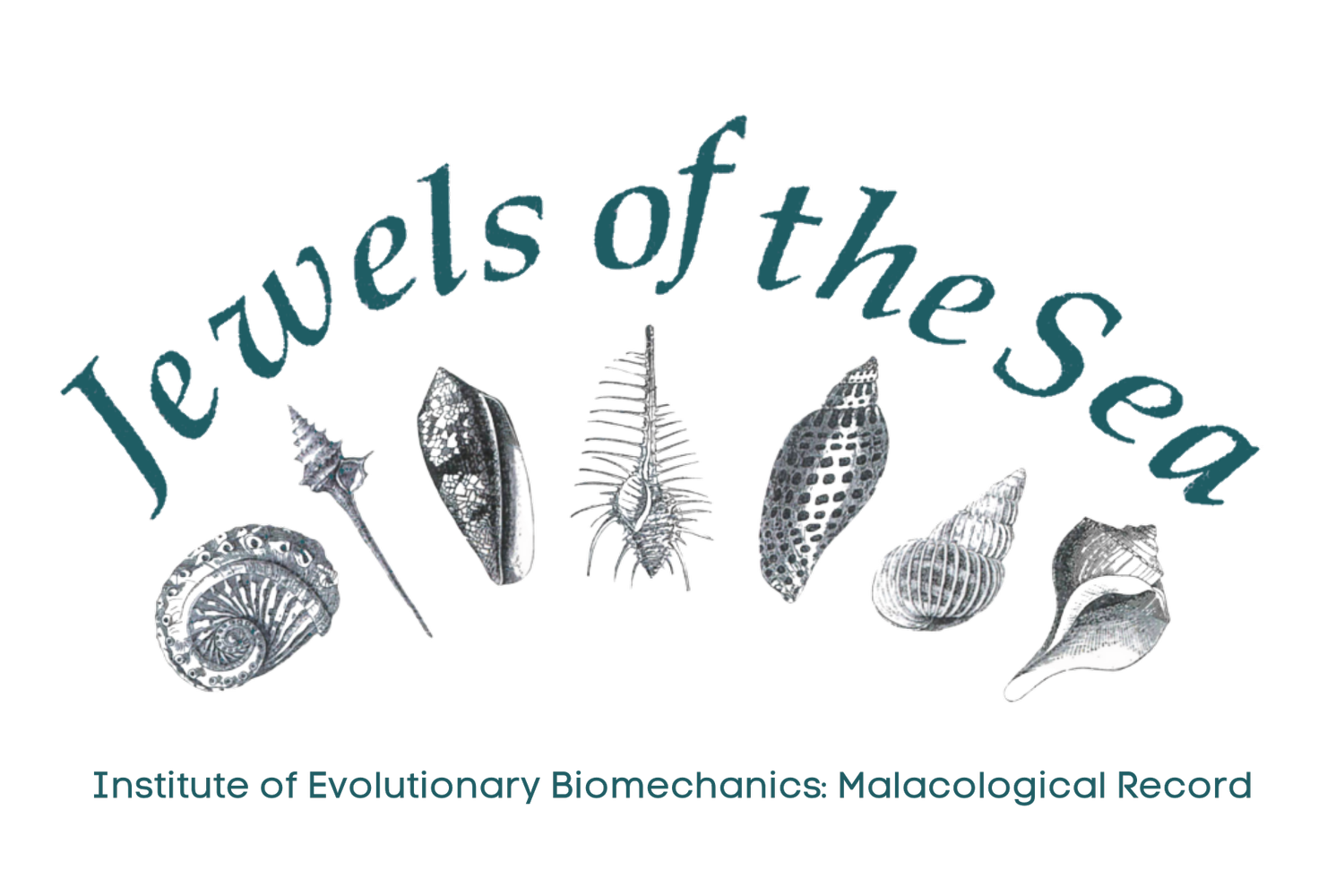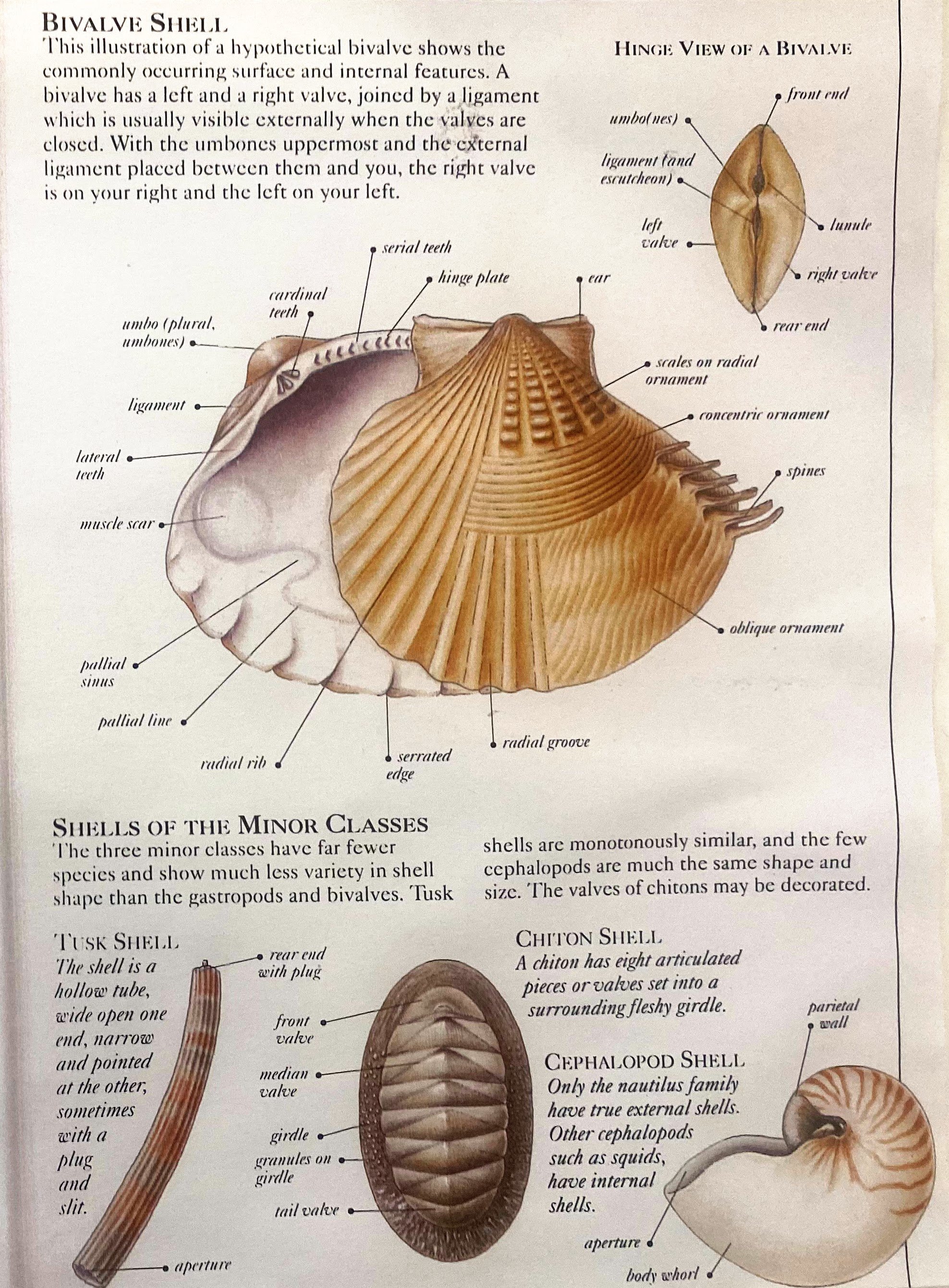Shell Composition and Characteristics
Layers of the shell
Shells are composed of calcium carbonate. The images below are calcium and carbon in their raw forms.
Aragonite
Coal
Calcite
Diagram showing the arrangement of the crystals of calcium carbonate in a crossed lamellar structure.
Shell material is distributed onto the leading edge of the shell by the mantle of the animal. This diagram shows the structure and layers of a clam shell, and the production of color patterns and sculpture as a shell grows.
Seashell Structure and Parts of the Shell
Seashells come in seemingly endless shapes and forms, but there are some common shapes and features seen across species. Below, see some examples of shapes and shell parts you may come across when collecting shells. Being familiar with these may help you in identifying your specimens.
Simple illustrations of the following shell shapes: convolute, fusiform, turbiniform, patelliform, sub-lenticular, turreted, biconical, conical, irregularly coiled, obconical, pyriform.
Diagram of parts of a gastropod shell.
Diagram of parts of a gastropod shell
A diagram of different parts of a gastropod shell.
Diagram of parts of a gastropod shell
Diagrams showing parts of bivalve shells, tusk shells, chiton shells, and cephalopod shell.
Seashells have teeth?!
Diagram of a gastropod radula, the tooth structure
Image taken an electron microscope of the ribbon tooth structure of gastropods
Goethite, among the hardest of natural metals, from which the animal forms its tooth structure
Diagram of the tooth ribbon structure of gastropods















